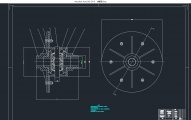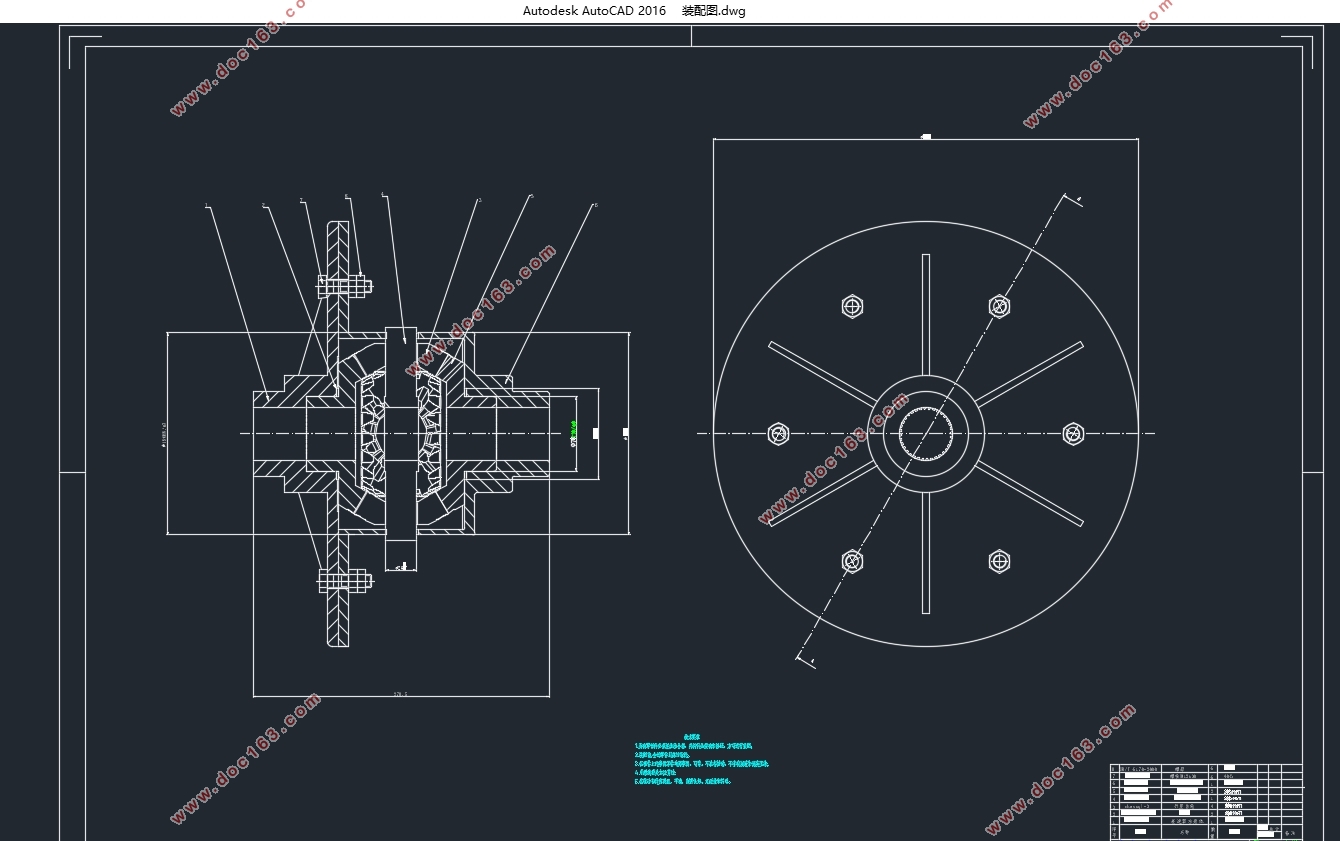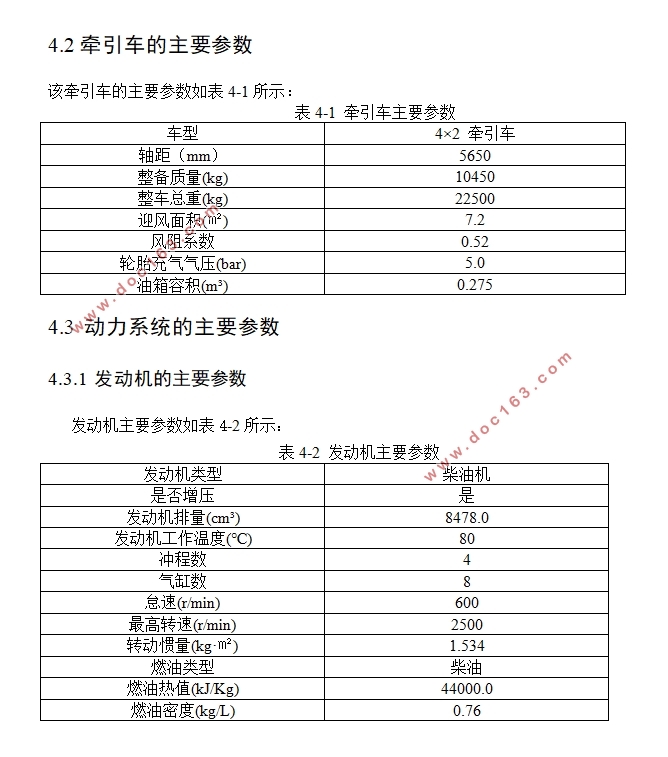重型牵引车动力系统匹配设计(含CAD零件图装配图)

重型牵引车动力系统匹配设计(含CAD零件图装配图)(任务书,开题报告,外文翻译,论文说明书12000字,CAD图6张)
摘 要
本文借助计算机仿真软件cruise对某款重型牵引车进行性能仿真分析,在软件里面建立整车模型,对车辆进行动力性和燃油经济性分析,所得结果对于缩短牵引车研发周期以及降低制造成本具有重要的指导意义。
论文主要研究了牵引车的动力性及燃油经济性,这两个性能是牵引车最基本也是最重要的两个性能。分析了不同传动系方案匹配下,汽车性能的改变,对传动系不同匹配方案进行了比较,提出改善牵引车动力性以及燃油经济性的措施,以及如何去选择传动系的参数来使汽车达到预期目标,以获得较好的性能。
研究结果表明:不同传动系统的匹配方案,牵引车的动力性以及燃油经济性会有不同,如果想要汽车达到预期的性能,需要选择一个最优的匹配方案。
本文的特色:使用计算机仿真软件cruise来对牵引车进行仿真分析,研究不同匹配方案下车辆性能的改变。
关键词:cruise;动力性;燃油经济性;匹配;传动系统
Abstract
In this paper, the computer simulation software cruise on a heavy tractor performance simulation analysis, the software inside the vehicle model, the vehicle dynamic and fuel economy analysis, the results for the shortening of the tractor cycle and reduce manufacturing costs are important The guiding significance. [资料来源:https://www.doc163.com]
The paper mainly studies the dynamic and fuel economy of the tractor, and discusses its evaluation index, which is the most basic and the most important performance of the tractor. The paper analyzes the dynamic data of the tractor and the fuel economy, and analyzes the changes of the performance of the vehicle under different system matching. The comparison of the different matching schemes of the driveline is carried out, and the improvement of the dynamic and the fuel Measures, and how to choose the parameters of the drive system to achieve the desired goal of the car, get better performance.
The results show that the matching scheme of different transmission systems, the power of the tractor and the fuel economy will be different. If you want the car to achieve the expected performance, you need to choose an optimal matching scheme.
The characteristics of this paper: the use of computer simulation software cruise to carry out simulation analysis of the tractor to study the different matching options under the vehicle performance changes, how to improve the performance of the vehicle measures. [资料来源:http://doc163.com]
Keywords: drive system;power performance;fuel economy;cruise;optimal matching
[资料来源:Doc163.com]



目录
第1章绪论 1
1.1 研究的目的及意义 1
1.2 国内外的研究现状 1
1.3 设计的主要内容 1
1.4 设计的目标 2
第2章cruise软件简介及仿真模型的建立 3 [资料来源:http://www.doc163.com]
2.1 cruise计算任务简介 3
2.1.1 循环行驶工况Cycle Run 3
2.1.2 爬坡性能Climbing Performance 4
2.1.3 稳态性能分析Constant Drive 4
2.1.4 全负荷加速性能计算 Full Load Acceleration 4
2.1.5 最大牵引力计算Maximum Traction Force 4
2.1.6 巡航行驶工况Cruising 4
2.1.7 制动/滑行/反拖Brake/Coast/Thrust 4
2.2 仿真模型的建立 4
2.2.1 牵引车列车结构分析及相应零部件模型选择 5
2.2.2 建立物理连接 5
图2-2 建立物理连接 6
2.2.3建立信号连接 6
图2-3 建立物理连接 7
2.3 各个子模型数据输入 7
2.4 仿真计算 7
2.5 仿真结果分析 8
第3章车辆传动系统概述 9
3.1 传动系统的组成及其功用 9
3.2传动系统的布置方案 10
3.3动力传动系统参数的选择 10
3.3.1传动系最大、最小传动比的选择 10
3.3.2利用加速时间-燃油经济性的曲线确定传动系参数 12
3.3.3确定主减速器的传动比 12
3.3.4 变速器及主减速器传动比的确定 13
第4章cruise仿真主要参数选择 14
4.1 优化匹配车型的选择 14
4.2 牵引车的主要参数 14
4.3动力系统的主要参数 14
4.3.1发动机的主要参数 14
4.3.2离合器的主要参数 15
4.3.3变速器的主要参数 15
4.3.4主减速器的主要参数 16
4.3.5差速器的主要参数 16
4.4 与优化匹配相关的各种参数的确定 17
4.4.1制动器的主要参数 17
4.4.2车轮的主要参数 17
4.5相关计算任务的设置 18 [来源:http://www.doc163.com]
4.6在cruise中计算并得到计算结果 18
第5章重型牵引车动力性分析 20
5.1 牵引车动力性分析 20
5.2 车辆动力性评价指标 20
5.2.1 车辆的最大爬坡度 20
5.2.2 车辆的加速时间及最高车速 21
第6章重型牵引车燃油经济性分析 22
第7章重型牵引车动力系统匹配结论 22
第8章总结与展望 25
8.1 总结 25
8.2 展望 25
参考文献 26
致谢 27
